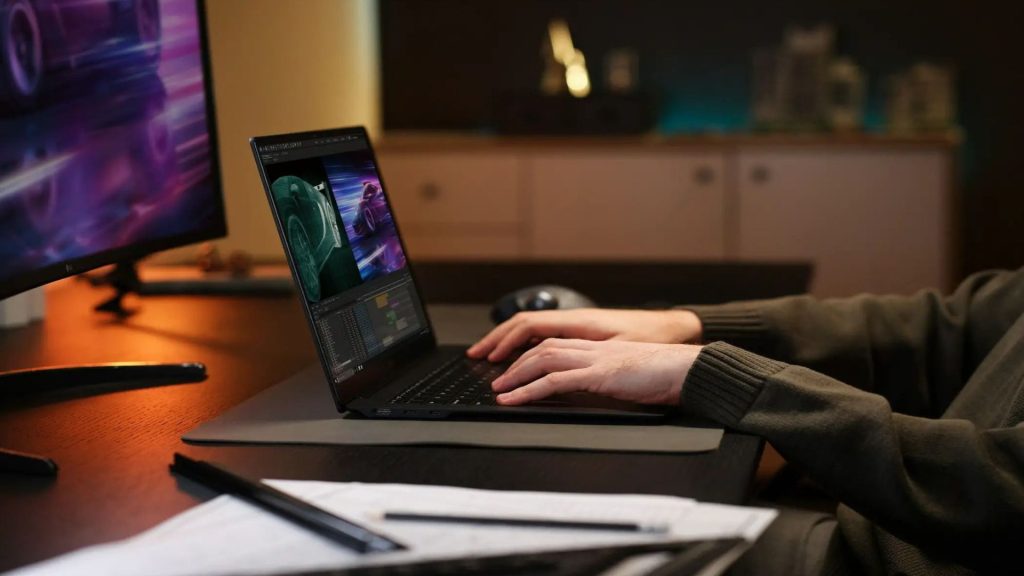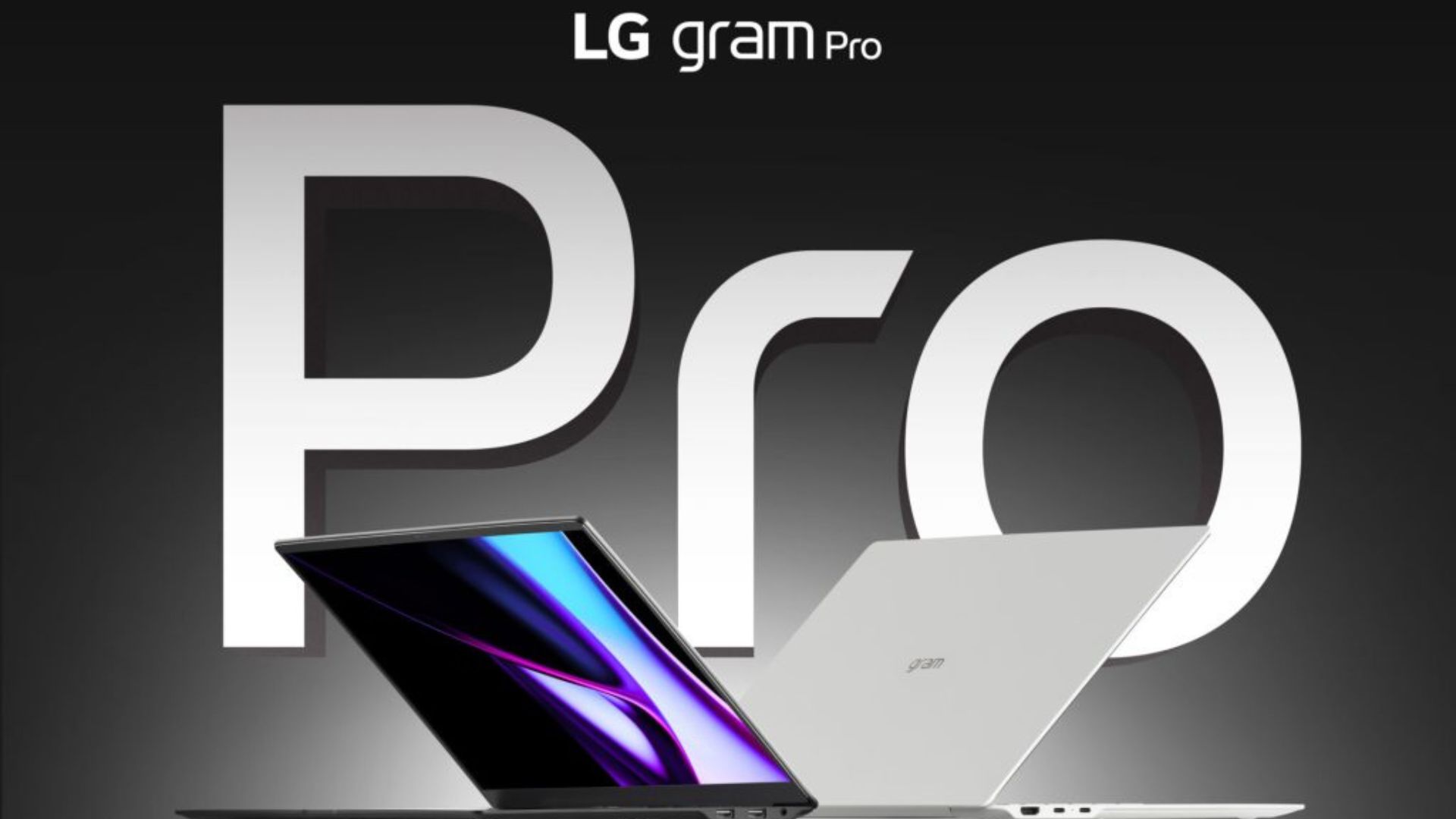Hey guys, Who wouldn’t want one of these? Big OLED screen, super thin and light design, enough performance to say play cyberpunk on high settings or, dare I say, get some work done, as well as the name would suggest because it’s the brand new 2024 LG Gram Pro 16 OLED. So is this 2024 model a big upgrade, and is it actually worth buying?
Now, of course, being an LG Gram, we get a big screen, a big battery, that uncannily light feeling like it’s half empty inside, surprisingly durable materials, and of course, a very wobbly screen, which seems to be Gram tradition right now because I mention this every single year; it never seems to get better. The hinge itself is fine, and I do appreciate that you can actually open it one-handed or one-fingered like that, but that glossy screen with that wobble is not a good combination. Anyway, more importantly, unlike older Grams, which could struggle with anything that needed a dedicated graphics card, these 2024 Grams get Intel’s core Ultra CPUs with much faster integrated ARC graphics. But this Gram Pro not only gets the faster Ultra 7155H CPU, which gets more cores and a higher turbo wattage, but also an Nvidia RTX 3050 GPU option, as well as an improved dual-fan cooling system and this gorgeous 120Hz OLED screen. There is also a 17-inch Gram Pro, which is even bigger, obviously, and has nearly identical specs, although it gets a 144Hz IPS LCD display instead of an OLED. But I would go with the OLED every time. But either way, these are the biggest screens on the lightest laptops you can get.

The Pro also meets Intel’s Evo platform specification for thin and light laptops. We get 16 or 32 gigs of RAM with a very healthy 1 or 2 terabytes of storage. And if you do go with the RTX 3050, you also get a bigger battery. We also get Windows Hello face unlocking via the 1080p webcam; we get WiFi 6E; two USB 4 Thunderbolt 4 Type-C ports; alongside a couple of very useful USB 3.2 Type-A’s; a full-size HDMI 2.1; and an audio jack. That is actually a very impressive range of ports for a laptop this thin. The only thing it’s missing that I would have liked is an SD card reader, but you can always get adapters. That’s not bad. But just look at that screen. 16 inches, 16 by 10 aspect ratio, 1800p resolution, which is kind of like quad HD Plus, 120 hertz dynamic refresh rate, and it’s OLED, which means you get those incredible inky blacks and rich colors. LG reckons this hits 400 nits of brightness, which matched my calibration tests, although I did record 500 nits sustained in SDR on a 100% white window, which is actually pretty good for an OLED.
Also, as I mentioned earlier, it is glossy and reflective, and it misses out on the anti-glare coating you get with the LCD option. I mean, look at those reflections. You’re going to have to be careful what you’ve got behind you because it does make it harder to see. So as well as that, we also don’t really have any proper HDR support; there’s no display HDR certification with this either, and it’s also not a touchscreen. It still looks good, though, and the colors are accurate. I wouldn’t have any problems editing photos and videos on this. Also, you’ve got LG’s Smart Assistant app, which comes with the usual OLED care options to minimize the chance of image retention, but as with burn-in on any OLED, only time will tell. But I’m not worried. Every year I review these LG Grams, and every year I bounce them around like this and get comments saying, What are you doing?
That’s a really expensive laptop, and you’re right. It’s just so lightweight that I can’t help but throw it around a little bit. And actually, despite dropping it a couple of times, I never had any issues; it’s actually surprisingly durable, and while there is a bit of flex in the screen and the chassis as a whole, LG says, especially at these bigger sizes, it actually does make it more durable. If you’ve got a backpack and things are pressing against it or you’ve got some weight on top, then that little bit of flex, like a good building during an earthquake, can move around and not actually crack or break. It also has some military 810H durability standard specs, which basically means you can take it to places where, well, I probably wouldn’t want to go anyway. And at 12.4 millimeters, it is less than a millimeter thicker than the MacBook Air M3, and these beveled edges around the sides help it look even smaller. My only gripe, aside from this screen wobble, is that the lower bezel is a little bit chunky. Relatively to some of the laptops we’ve seen, and also as you can see, there is a good amount of space around the trackpad where they could have either made the trackpad bigger or just condensed the whole laptop and made it a little bit more compact. Overall, that’s not a huge deal. It is also not the most exciting-looking laptop; it is a little bit boring, drab, and officey, perhaps, although I quite like this sturdy magnesium alloy chassis that we’ve got going on here.
I would have loved to have seen the style—the white sort of pearlescent finish that we saw on some of the older Grams—or maybe even a more colorful option, but I guess that’s just personal preference. Overall, the 2024 LG Gram Pro 16 OLED is a fantastic laptop with some impressive specs, including the big OLED screen, powerful CPU and GPU options, and a range of ports. It’s also impressively durable and lightweight, making it a great option for those who need to take their work on-the-go.
So, is it worth buying? Well, if you’re in the market for a high-performance lightweight laptop with a big screen and a great battery life, then I would say yes, the LG Gram Pro 16 OLED is definitely worth considering.

Leave a Reply